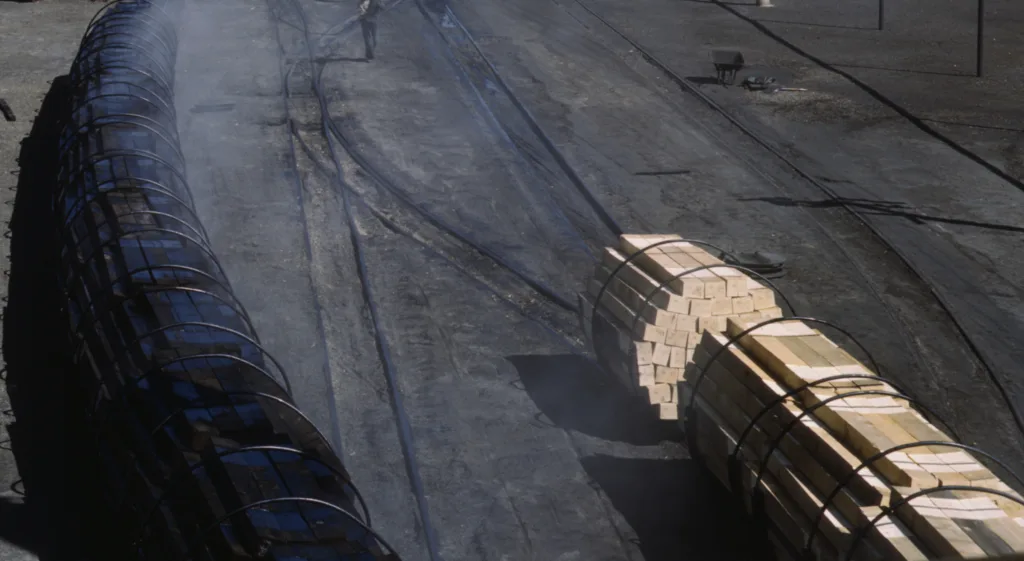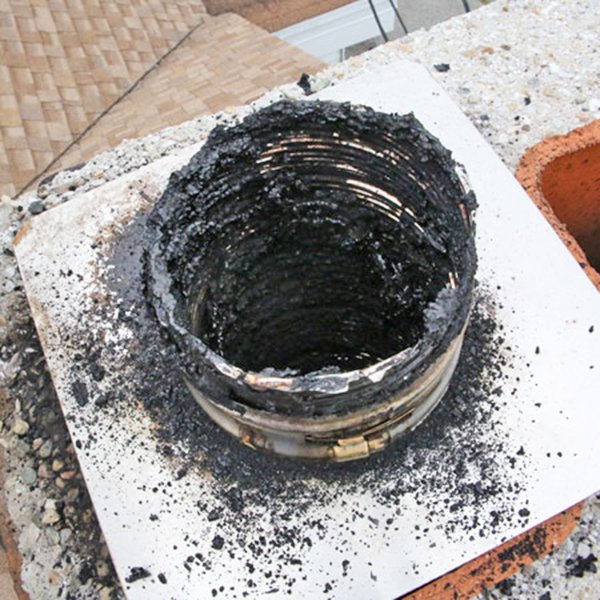Creosote combustion is a serious safety hazard that can lead to chimney fires and even house fires. During the burning of firewood, creosote forms as a flammable byproduct and deposits on the surfaces of stove pipes or chimney flues. This deposit can become thick and sticky, similar to tar. What’s more, it’s highly flammable and all it takes is a spark from an ember to ignite it.
The temperature at which creosote combusts depends on several factors including the type of wood used, size of the fire, amount of air getting into the fireplace and chimney height. Generally speaking, creosote ignites at temperatures above 250ºF. However, when the temperature drops below 150ºF, creosote will form a thick deposit that is more prone to combustion.
It’s important to regularly inspect your chimney for signs of creosote buildup and have them professionally cleaned if necessary. Not only does this reduce the risk of a chimney fire but also improves air quality in your home as creosote releases toxic chemicals when burning.
If you suspect you have a chimney fire, immediately call 911 and stay out of the house until help arrives. Chimney fires can reach temperatures up to 2000ºF so they shoud never be taken lightly! Make sure your family knows what to do in case of an emergency so everyone stays safe.
Formation of Creosote at Different Temperatures
Creosote forms when the temperature of the stove pipes or chimney flues drops below 250ºF. As the temperature continues to decrease, creosote deposits become thicker and stickier until they are similar to tar at temperatures below 150ºF. To prevent excessive creosote buildup, it is important to keep the temperature in your stove pipe or chimney flue above 250ºF.

The Effectiveness of Hot Fires in Burning Off Creosote
No, a hot fire will not burn off creosote. Although creosote is highly flammable, it will not be eliminated when burned at a high temperature. Creosote is a sticky, tar-like substance that accumulates in chimneys and can build up quickly with continual fires. The only way to properly remove creosote from the chimney walls is by scraping it away or using a professional chimney cleaning service.
What Temperature Does a Chimney Fire Begin At?
Chimney fires typically start when the hydrocarbon gases released by burning wood reach a temperature of 1100 degrees Fahrenheit. At this temperature, the gases mix with air and become highly combustible, igniting a fire that can spread quickly up the chimney and into the home. It is important to keep flues and chimneys regularly cleaned to reduce the risk of this dangerous fire hazard.
Burning a Creosote Log Alone
No, you can’t burn a creosote log by itself. The creosote log is designed to be used in conjunction with regular wood-burning fires. This type of log releases chemicals that help to break down the creosote deposits in your chimney. In order for the log to be effective, you’ll need to build a fire on top of it with regular wood so that the chemicals from the log can be released and do their job. Make sure that you monitor your fire closely and remove any flakes of creosote that may fall off onto your fireplace floor.
Can Burning Aluminum Cans Reduce Creosote Buildup?
No, burning aluminum cans does not remove creosote. Creosote is a tar-like substance that can form in chimneys from the combustion of wood, coal, and other organic materials. Burning aluminum cans does not produce enough heat to effectively remove creosote build-up from a chimney. Additionally, aluminum oxides are very stable and do not react to high temperatures like creosote does, meaning there is no chemical reaction between the two that would help break down the creosote. The best way to remove creosote is by having a professional inspect and clean your chimney regularly.

Extinguishing a Creosote Fire
When extinguishing a creosote fire, it is important to use caution. To begin, you must cut off the oxygen supply to the fire. You can do this by closing the damper and covering it with wet towels or blankets. You should then spray short bursts of water into the firebox until all visible flames are extinguished. If you don’t have access to a fire extinguisher, you can also use sand, salt, or baking soda to smother the flames and deprive them of oxygen. If any embers are thrown out durig this process, soak them in a bucket of water until they have been completely extinguished. Lastly, make sure to check for any remaining hot spots and douse them with additional water if needed.
Dissolving Creosote
Creosote is a highly combustible material that builds up in wood-burning fireplaces, and can be difficult to remove. The best way to dissolve creosote is to make a thick paste usng an equal amount of salt and dish liquid, such as Dawn. Then add a half cup of ammonia to the mixture and stir it until all the ingredients are thoroughly combined. Once your paste is ready, apply it directly to the creosote buildup in your fireplace. Allow it to sit for several minutes before scrubbing with a stiff brush or steel wool pad. Repeat this process until all the creosote has been removed, then rinse with hot water.
The Effectiveness of Methods for Destroying Creosote
Creosote can be destroyed by treatment with chlorine solutions, such as sodium hypochlorite or calcium hypochlorite. These chlorine solutions open the phenol ring of the creosote molecule, allowing it to be broken down and respired as part of normal digestion processes. This process is much more effective than attempting to simply break down the creosote molecule without the use of chlorine.
Understanding the 10-3-2 Chimney Rule
The 10 3 2 chimney rule is a standard safety regulation for constructing chimneys. It requires that the shortest side of the chimney must be at least 3 feet above any roof penetration, and its top must be 2 feet higher than any part of the building that is within 10 feet. This rule was established to protect against fires caused by sparks or embers escaping from the chimney and igniting nearby combustible material. It also serves to prevent damage to roofs caused by heat emanating from the chimney, as well as ensuring proper ventilation of flue gases.

Can Chimney Fires Burn Out on Their Own?
A chimney fire can burn itself out, but it is not recommended. Chimney fires are caused by a buildup of flammable creosote on the interior walls of the chimney, and when heated to a high enough temperature, the creosote can ignite. Once ignited, the creosote will continue to feed the fire and cause temperatures to rise even higher. This can cause damage to the chimney liner as well as oter parts of your home. Additionally, a chimney fire will produce large amounts of smoke and could potentially spread to other parts of your home if left unchecked. For these reasons, it is best to take preventive measures to avoid a chimney fire rather than relying on it burning itself out.
Signs of a Chimney Fire
The first signs of a chimney fire are often quite unmistakable. You may hear a loud, crackling or popping sound coming from the chimney flue – much like a large bonfire. You may also notice dense, thick smoke coming into the fireplace or out of the top of the chimney. In some cases, you may even see pieces of flaming creosote coming from the top of the chimney or large flames. Additionally, there may be an intense and hot smell that is hard to ignore. If you experience any of tese signs, it is important to act quickly and contact your local fire department for help.
Conclusion
In conclusion, creosote is a highly flammable substance that is produced during the chemical reaction of combustion when burning a fire. It can condense on the surfaces of stove pipes or chimney flues at temperatures below 250ºF and will become thick, sticky and similar to tar at temperatures below 150ºF. A spark from an ember is all it takes to set the chimney alight, resulting in a potentially dangerous chimney fire. Therefore, it is important to regularly inspect and clean your chimney to prevent the accumulation of creosote.
